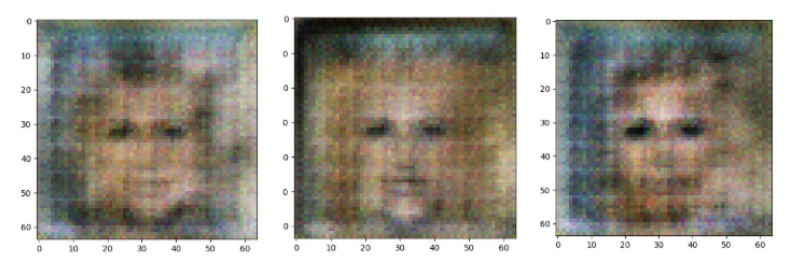Autoencoding beyond pixels using a learned similarity metric
For this project, we are going to rebuild the model specified in the paper of Larsen et. al. (2016). (https://arxiv.org/pdf/1512.09300.pdf)
- keras
- numpy
- Pillow
- matplotlib
CelebA dataset - Using aligned images and then resizing it to 64x64 pixels
In this method, a variational autoencoder (VAE) is combined with a Generative Adversarial Network (GAN) in order to learn a higher level image similarity metric instead of the traditional element-wise metric. The model is shown in Fig.1.
Fig.1 VAE-GAN Network Overview
The encoder encodes the data sample
The VAE and GAN is trained simultaneously using the loss function in Equation 1 which is composed of the prior regularization term from the encoder, the reconstruction error, and the style error from the GAN. However, this combined loss function is not applied on the entire network. Alg.1 shows the algorithm used in training the VAE/GAN network.
Equation 1. Combined loss function
Algorithm 1. VAE/GAN Network Algorithm
The model trains the discriminator more often than the generator, which according to some papers, will yield better results.
We were able to generate faces from the noise. Some facial features like the eyes, nose, lips, and chin are easily distinguishable. However, the generated faces appears blurry and noisy, one of the possible causes might be in the encoder model and the lack of training time.
For training the model
- python3 VAEGAN.py
For testing
- python3 VAEGANtest.py



